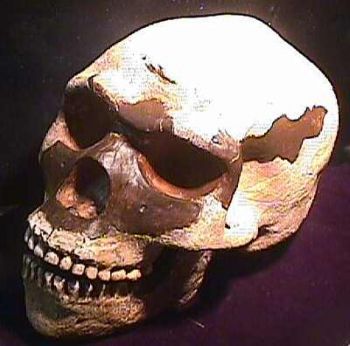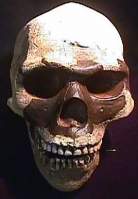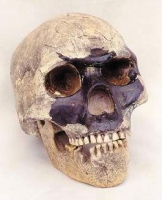
The Homo sapiens skull Skhul 5 was discovered by T. McCown near Mount Carmel, Israel in 1932. McCown first described the skull in 1936 in the Bulletin American School of Prehistoric Research (Issue 12). The remains of 10 individuals were excavated from Skhul cave in 1932 and are widely considered to be the earliest examples of H. sapiens outside of Africa. The Skhul skulls show much variation in the expression of modern traits. With a cranial capacity of 1520 cc, features common to modern skulls are the high forehead, expanded frontal portion of the braincase, and rounded back of the skull. Differences from modern skulls include its more pronounced brow ridges, and prognathic lower face. Skhul 5 has been suggested as providing evidence of hybridization between humans and Neanderthals. Current evidence indicates that Neanderthals and early modern Homo sapiens alternately occupied the Near East during cold and warm periods, respectively, for thousands of years.
resin
8.75 inches high
Item 1562
Category: Replicas
Type: Skulls
Phylum: Vertebrates
Class: Hominids & Humans
MORE PHOTOS:



Now Over 1,000 Items!
PrehistoricStore.com offers the largest selection of replica fossils and other fossil-related products anywhere in the world!
Download a Full Catalog (3MB PDF)
OVER 260 PAGES OF REPLICAS AND MORE!
